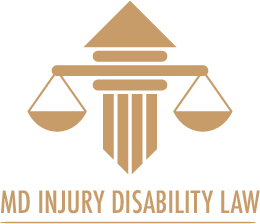Physical therapy plays a crucial role in the recovery and rehabilitation of individuals dealing with injuries, surgeries, or chronic conditions. A tailored approach to treatment ensures that each patient receives the personalized care they need to return to their daily activities as quickly and safely as possible. Today, our friends from Mid Atlantic Spinal Rehab & Chiropractic delve into the array of treatments available within a clinical setting and explore the concept of prescribed exercises or tasks that patients are encouraged to perform at home to enhance their recovery process.
In-Clinic Treatments
At the core of in-clinic therapy sessions are specialized treatments designed to address the unique needs of each patient. These may include manual therapy techniques, where therapists use their hands to manipulate or mobilize tissues to improve movement and reduce pain. Such methods often involve soft tissue work, joint mobilization, and manual lymphatic drainage, aiming to enhance function and decrease discomfort.
Another cornerstone of treatment is therapeutic exercises. These are specific movements and exercises tailored to strengthen the body, improve flexibility, and increase range of motion. Under the guidance of a therapist, patients engage in these exercises to target specific areas affected by injury or disease, promoting healing and preventing further injury.
Modalities such as ultrasound, electrical stimulation, and heat/cold therapy may also be employed. These treatments help reduce pain, inflammation, and muscle spasms, creating an environment conducive to healing and facilitating the effectiveness of other therapeutic interventions. Physical therapy ranges greatly in treatment types and what works best for each patient.
At-Home Exercises
Equally important to the recovery journey is the continuation of exercises outside the clinic. Therapists often prescribe at-home exercises, or “homework,” to reinforce the progress made during in-clinic sessions. These exercises are carefully selected to be safe and effective for each patient to perform independently, ensuring the continuity of care and promoting self-management of conditions.
Homework might include stretches to maintain flexibility, strengthening exercises to build muscle support around injured areas, and balance or coordination tasks to restore function. Adherence to these exercises is vital for achieving the best possible outcomes and can significantly accelerate the recovery process.
Empowering Patients Through Education
Education is a fundamental component of therapy, providing patients with the knowledge needed to understand their condition, the rationale behind their treatment plan, and how to prevent future injuries. Physical therapists dedicate time to teaching proper techniques for at-home exercises, ergonomics for daily activities, and strategies to manage symptoms effectively. All of these will be crucial for your road to recovery.
The Importance Of A Collaborative Approach
A successful rehabilitation journey relies on a collaborative effort between the therapist and patient. Active participation in both in-clinic treatments and at-home exercises is essential for achieving optimal results. Therapists are committed to supporting their patients every step of the way, adjusting treatment plans as needed and providing the encouragement and expertise necessary to overcome challenges.
Physical therapy offers a comprehensive approach to healing and rehabilitation, combining in-clinic treatments with prescribed at-home exercises. These efforts are designed to empower patients, providing them with the tools and knowledge needed for a successful recovery. If you or someone you know is in need of physical therapy, consider reaching out to a qualified physical therapist to begin the journey towards improved health and well-being. Together, with dedication and the right support, overcoming physical challenges and returning to a fulfilling, active lifestyle is entirely possible.

